Digital Poster
AD: Neurofluids & Vasculature
ISMRM & ISMRT Annual Meeting & Exhibition • 10-15 May 2025 • Honolulu, Hawai'i

 |
Computer Number: 145
4570. Association
between the cerebral blood transit times, amyloid-β pathology
and cognitive decline in non-dementia adults
Y. Zhang, X. Luo, J. Sun, P. Huang
The Second Affiliated Hospital, Zhejiang University School of Medicine, Hangzhou, China
Impact: This study highlights the role of prolonged
blood transit times in AD progression, linking
cerebrovascular dysfunction with Aβ pathology and cognitive
decline.
|
|
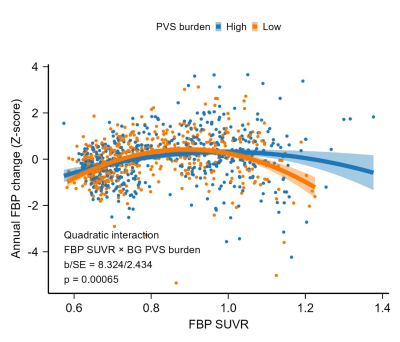 |
Computer Number: 146
4571. Enlargement
of perivascular spaces is associated with accelerated Aβ
accumulation
L. Liu, Q. Zeng, H. Hong, M. Lin, R. Zhang, P. Huang
Department of Radiology, The Second Affiliated Hospital, Zhejiang University School of Medicine, Hangzhou, China
Impact: We found that higher PVS burden is associated
with faster rates of Aβ accumulation. This insight enhances
our understanding of mechanisms and trajectory of Aβ
accumulation, which could aid in developing therapeutic
strategies to delay the progression of Alzheimer’s disease.
|
|
 |
Computer Number: 147
4572. Choroid
plexus and perivascular space enlargement in Alzheimer's
disease: a 7T MRI study
W. Zhang, H. Liu, L. Qian, D. Wang, L. Shen, W. Liao
Department of Radiology, Xiangya Hospital of Central South University, Changsha, China
Impact: This study suggests that CPV and enlarged PVS
may serve as new non-invasive MRI marker for glymphatic
dysfunction in AD.
|
|
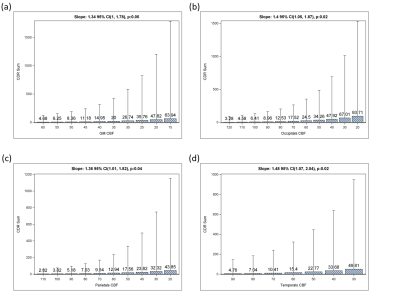 |
Computer Number: 148
4573. Longitudinal
cerebral blood flow reduction associated with fast cognitive
decline in elderly adults at an individual level
T. Zhao, S. Cen, J. Tang, S. H. Chung, E. Joe, V.
Marmarelis, H. Chui, L. Yan
Northwestern University, Chicago, United States
Impact: This study fills the gap of research in the
association between longitudinal changes of CBF and
cognitive functions at an individual level.
|
|
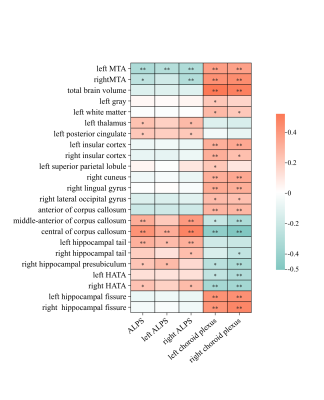 |
Computer Number: 149
4574. Linking
Brain Reserve to Glymphatic system Function in Mild Cognitive
Impairment: Evidenced by Choroid Plexus Volume and DTI-ALPS
z. liang, L. yang, Y. WenXia, Z. YanHu, Z. Yu, G. Xing, A.
Kai, L. GuangYao, Z. Jing
The Second Hospital & Clinical Medical School, Lanzhou university, lanzhou, China
Impact: Our findings highlight that MCI patients
exhibited decreased glymphatic activity compared to NCs, and
glymphatic activity could be used to evaluate brain reserve
in MCI, which is further related to cognitive impairment
|
|
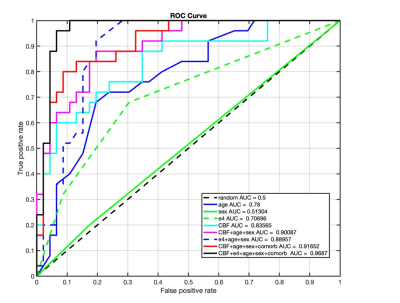 |
Computer Number: 150
4575. Cerebral
Blood Flow Associations with Apolipoprotein E4 and Cerebral
Amyloid Burden in Cognitively Intact Individuals
S. Nikolova, G. Dumkrieger, L. Baxter, B. Woodruff, R.
Caselli, O. Dumitrascu
Mayo Clinic, Phoenix, United States
Impact: Our results will impact researchers and
clinicians, enhancing early Alzheimer’s diagnosis and
intervention. Future research may explore lifestyle and
other vascular-targeting modifications for APOE4 carriers,
allowing for personalized treatment strategies, and
improving patient outcomes.
|
|
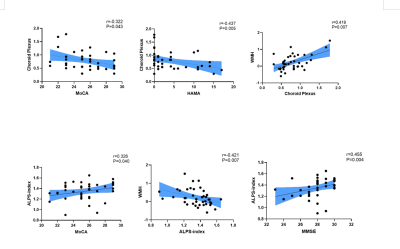 |
Computer Number: 151
4576. Imaging
Indicators of the Glymphatic System in T2DM: Correlation with
Cognition, and Choroid Plexus Volume-Mediated Impact on
WMH-Cognition
s. yu, W. Wang, H. Jiang
The First Affiliated Hospital of Dalian Medical University, Dalian City, China
Impact: In T2DM, limited literature evaluates the
glymphatic system multidimensionally. Our study pioneers
mediation analysis of the glymphatic system's role in
CSVD-cognition link.
|
|
 |
Computer Number: 152
4577. Evaluation
of Surgery for Improving Brain Glymphatic Circulation in Slowing
Advanced Alzheimer’s Disease Progression by Glymphatic MRI
H. Ma, S. Ai, P-Y Wu, Y. Zhang
Shanghai Ninth People's Hospital, Shanghai Jiao Tong University School of Medicine, Shanghai, China
Impact: A decrease in ALPS indicates a lower
cerebrospinal fluid clearance rate in AD patients, while
increased FW-WM suggests fluid accumulation in the brain’s
interstitial space. Postoperative changes imply improved
cerebrospinal fluid clearance and a reduction in prior
accumulation.
|
|
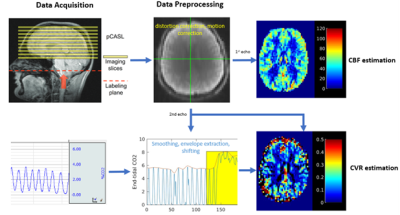 |
Computer Number: 153
4578. Test-retest
reliability of Cerebral Blood Flow and Cerebrovascular
Reactivity using novel M2-PCASL sequence in healthy adults.
J. Todd, M-J Mateos, I. Budeir, D. Qiu
Emory University, Georgia Institue of Technology, Atlanta, United States
Impact: Reliable estimation of cerebrovascular
parameters is essential for scientists and clinicians to
study these parameters in neurodegenerative diseases such as
Alzheimer's Disease and will enable the discovery of disease
biomarkers and potential drug targets for therapeutics.
|
|
 |
Computer Number: 154
4579. A
preliminary study of MRI-Derived Glymphatic System indices in
early normal elderly people
M. Huang, X. Lyu, Y. Yin, P. Wu, B. Gao
Affiliated Hospital of Guizhou Medical University, Guiyang, China
Impact: These findings may provide new evidence for the
influence of GS function on aging and many other
neurodegenerative disease in clinical practice.
|
|
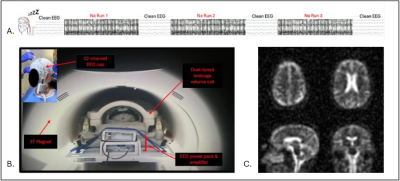 |
Computer Number: 155
4580. Impact
of Sleep on Extracellular Space in Human Brains: A Simultaneous
Study with Sodium MRI and EEG
K. Watson, X. Chen, Y-C Lin, N-M Kumbella, J. Quimbo, S.
Henin, Z. Rockowitz, A. Liu, A. Masurkar, J. Babb, Y. Ge, Y.
Lui, Y. Qian
New York University Grossman School of Medicine, New York, United States
Impact: Our findings confirmed the impact of sleep on
extracellular volume fraction in the human brain, which may
influence cerebrospinal fluid clearance and has potential
implications for Alzheimer's Disease progression.
|
|
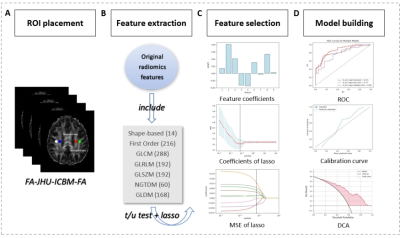 |
Computer Number: 156
4581. Integrated
DTI-ALPS and Radiomics for Alzheimer's Disease Diagnosis and
Cognitive Function Evaluation
X. Mao, L. Han, Z. Jia
Affiliated Hospital and Medical School of Nantong University, Nantong, China
Impact: DTI-ALPS shows promise as a valuable tool for
accessing GS alterations in AD. Integrated ALPS index and
radiomics can improve diagnostic capabilities and assess
cognitive function in patients with AD.
|
|
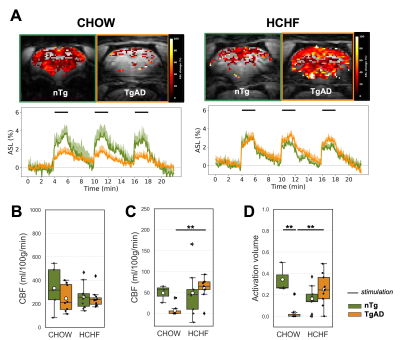 |
Computer Number: 157
4582. Perfusion
Imaging via Pseudo Continuous Arterial Spin Labeling in
Transgenic Rat Model of Alzheimer’s Disease on High Carbohydrate
High Fat Diet
D. Almanza, M. Koletar, G. Stanisz, J. McLaurin, B.
Stefanovic
University of Toronto, Toronto, Canada
Impact: We established an assay of hippocampal
neurovascular function for studying the sequelae of AD and
its vascular comorbidities that is of high translational
potential given limited aging/neurodegeneration dependent
effects on somatosensation and ease of delivering
somatosensory stimuli.
|
|
 |
Computer Number: 158
4583. The
age-related trend in the diffusion tensor image analysis along
the perivascular space (DTI-ALPS)
X. Lyu, Y. Yin, Y. Sun, X. Lei, K. Ai, B. Gao
The Affiliated Hospital of Guizhou Medical University, Guiyang, China
Impact: This study contributes to understanding the
relationship between ALPS and age and the differences in
ALPS between the two hemispheres of the brain.
|
|
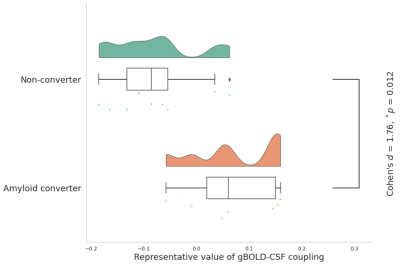 |
Computer Number: 159
4584. The
coupling of global brain activity and cerebrospinal fluid flow
as a potential predictive marker of amyloid-β accumulation
Y. Tanaka, K. Kamagata, Y. Saito, K. Takabayashi, R. Iseki,
W. Uchida, C. Andica, A. Hagiwara, A. Wada, T. Akashi, O.
Abe, S. Aoki
Juntendo University Graduate School of Medicine, Tokyo, Japan
Impact: This
study clarifies that reduced CSF clearance causes brain Aβ
accumulation and demonstrates that gBOLD-CSF coupling could
serve as a non-invasive biomarker for predicting future
brain Aβ accumulation, potentially enabling pre-preclinical
Alzheimer's disease interventions that target clearance
dysfunction.
|
|
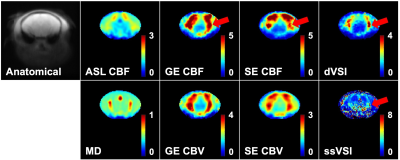 |
Computer Number: 160
4585. Progressive
cerebrovascular impairment in transgenic Alzheimer’s disease
mouse models: a 12-month longitudinal study
H. Lee, S. Mirrione, N. Ruiz Uribe, S. Huang, R. Bennett,
Y-F Yen
Massachusetts General Hospital, Charlestown, United States
Impact: This study delineates the timeline of
cerebrovascular change in AD models, enhancing our ability
to interpret in vivo vascular imaging in humans. Future
cross-sectional ex vivo microscopy will help validate in
vivo MRI measures relevant to AD pathology.
|
The International Society for Magnetic Resonance in Medicine is accredited by the Accreditation Council for Continuing Medical Education to provide continuing medical education for physicians.